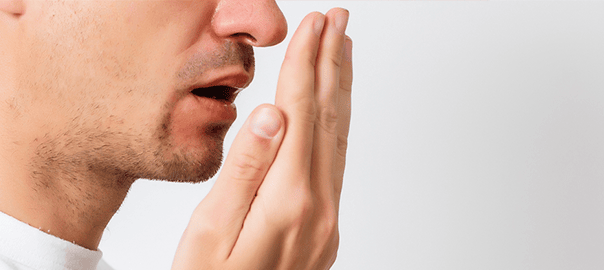
Bad Breath: Causes, Symptoms, And Diagnosis
Nowadays, around 30 per cent of people get affected by bad breath. It is also known as halitosis. People with awful breaths can feel embarrassed and even feel anxious. In today’s world, there are several stores with overflowing mints, gums, mouthwashes, mouth fresheners, etc. They are specially made to fight bad breath. However, all these products work only for a short period and do not impact the actual reason behind the issue.
What is halitosis?
It is a common problem many people face, which causes serious psychological distress to them. There are numerous bad breath treatments available for people. It is found that 2 in 5 people have halitosis frequently. People suffering from it require oral care.
What causes bad breath?
It is always recommended to visit a dentist if people have frequent bad breath. Mentioned below are some of the potential causes of halitosis.
Food
When the food breaks down, small food particles get stuck between the teeth, responsible for causing odours. Some people especially cause bad breath, such as garlic and onion. Once digested, the breakdown items are carried to the lungs through the blood. Thus, it affects the breath and makes them smell bad.
Tobacco
Tobacco products can increase the chances of getting gum diseases. These products generate their kind of mouth odour. It causes bad breath, and people do not like it generally. Such people need bad breath treatment as early as possible.
Oral hygiene
The food particles stuck between the teeth can get removed by properly brushing and flossing. Those particles slowly break down and generate odour in the mouth. The plaque will start building up if you do not brush your teeth regularly. Sometimes, the plaque might cause inflammation between the gums and teeth by irritating the gums. The increasing number of bacteria in the mouth can result in halitosis.
Mouth, nose and throat conditions
At the back of our throat, tonsils are present, which allows small, bacterial stones to be formed on them. It produces a bad odour in our mouth. The dentists also provide knowledge about what causes bad breath to the public. The other reason behind halitosis can be the inflammation or infections in the throat, nose, or sinuses.
Diseases
In some people, what causes bad breath is multiple diseases such as liver failure, cancer, metabolic diseases, etc. A bad smell is produced because of the mixture of chemicals. People having these diseases need to get bad breath treatment for their betterment.
Dry mouth
Saliva is essential for the human body as it helps clean the mouth. If your mouth is dry either naturally or for a particular reason, it can produce an odour. In some cases, the odour can be produced due to xerostomia disease.
Symptoms: What causes bad breath?
The odour of the breath might vary according to the reason behind the problem. It is suggested to take help from a family member, close friend, relative, etc., to check on the smell of your mouth. It can be done with someone else’s help because people might not be able to do it themselves.
However, if you live alone, you can opt for another method to check on your odour. You can lick your wrist and leave it to get dry. Once it is dried, smell it. If the wrist has a bad odour, then you have halitosis.
There are a few people who have more concerned about their breath. Even if their breath has no or little odour, they feel anxious and unhappy about it. This is a condition known as halitophobia. It results in obsessive mouth-cleansing practice.
Diagnosis: what causes bad breath?
Dentists can detect halitosis in a simple way only. They will smell the odour from the mouth and rate it on a six-point intensity scale. They also check the strongest source of smell which can be obtained through the scrapes from the backside of the tongue. The dentists take the scraping and smell it to determine if the person has halitosis or not.
There are multiple ultra-modern detectors which help in rating the odour more accurately. Mentioned below are some of the detectors that are useful for the dentist while diagnosing bad breath.
- Gas chromatography: It is a type of test responsible for measuring three different volatile sulfur compounds, namely, hydrogen sulfide, dimethyl sulfide, and methyl mercaptan.
- Beta-galactosidase test: It finds the level of enzyme beta-galactosidase to correlate with the breath odour.
- Halimeter: It determines the low level of sulfur.
- BANA test: It helps determine the level of a particular enzyme caused by the bacteria responsible for halitosis.
The dentist can identify the cause behind the issue and will give a bad breath treatment.
The Bottom Line
The people concerned about what causes bad breath should always take care of their mouth, teeth, tongue, and complete oral care. The gums and mints present in the marketplace are only a temporary solution as they cover the odour mask just for a while. It would be best to visit the dentist for regular checkups and cleanings. Sometimes, bad breath might result from gum disease or sinusitis. Explore the website to know more.
DISCLAIMER:Please note that the prices mentioned on this page: (a) present a range (depending upon the severity of the dental condition, the technology used in treatment, type of dental products used, etc.); (b) are true as on the date of this page and may change on a later date, in accordance with the standard company policy; (c) may be subject to standard aberrations or generalizations on account of the use of AI in general Google/internet search by you.Leave a Reply
Leave a Reply
Explore More Similar Posts
Explore More Blogs


Leave a Reply